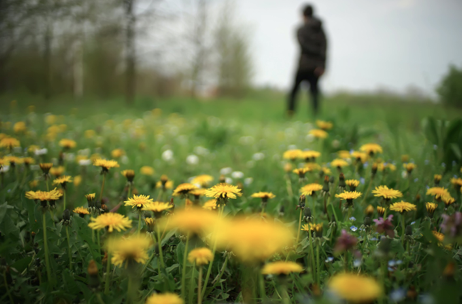Estimated reading time: 4-5 minutes
Key words: Natural remedies, weeds, healthy living
What separates a weed from a useful plant which we have purposefully cultivated?
Nothing really. A weed is merely a plant growing in an inconvenient place and has become bothersome to us. In no way does this mean it has no use or value to us as humans.
Many of the most common weeds found growing in the average garden or even sidewalk, have powerful medicinal properties that most societies have forgotten about or have ignored in recent years. Many of these were used by humans for thousands of years as natural medicine for common ailments. Nowadays, most of these have been replaced by modern medicine (pharmaceuticals).
But these plants are still as potent as they were once before, and are still as widely available as ever; still there for us to make use of. Below we will be looking at some species you may want to try the next time you are feeling under the weather.
How does one safely use weeds as medicine?
These herbs are often potent and should be used with caution. Just like a common kitchen stove is dangerous if used incorrectly, so can natural remedies be.
Many assume that natural medicine is automatically “safe” or not as potent as medicine available from your local drug store, and this is not necessarily true. These plants often contain considerable amounts of the compounds found within modern medicines today. As with any medicine, it is advised to practice caution and make sure that the dosage being taken is correct.
Is the environment the plant in safe?
Public parks and sidewalks are often exposed to pesticides and herbicides, which obviously may be harmful if ingested. Ensure that any plants you may be consuming haven’t been exposed to any toxins and additionally haven’t been in contact with dog feces and the like. Busy roads are often also expose plants to high levels of pollution from vehicles, and thus you may want to avoid these.
Is it what you think it is?
Sometimes plants can be confused with one another, so be careful not to end up consuming something you shouldn’t. Always check thoroughly that the plant you’re harvesting is the correct one. Taking a friend with who has experience with gardening and weeds is always a great idea. If you have purposefully grown your own plants and are sure of their identity, it will save considerable time and effort later. That being said, it is quite rewarding to take a close look at what occurs naturally and identifying uses for them.
Dandelion (Taraxacum spp)
Dandelion is probably most famous for its seed heads which can be blown to “make a wish”, much to the delight of children and those adults still whimsical enough to give them a blow. These low growing annual weeds are notorious for growing in inhospitable areas, and are easily recognizable for their uniquely shaped leaves and bright yellow flowers.

Uses
All parts of the dandelion can be used and are highly nutritious. The plant is especially high in vitamin A, C, K, calcium and iron, while containing good amounts of several other vitamins and minerals. As a result, it has been used as a general tonic by traditional Chinese and Ayurvedic medicines for hundreds of years.
Ongoing research suggests that Dandelion may aid in the protection of the brain against Alzheimer’s. Dandelion also provides a huge amount of vitamin K, one cup (55g) contains 535% of the RDA, which gives it the potential to be used to strengthen bones. In some studies, dandelion has even been found to help reduce the chances of cancer and has the potential to help protect the eyes against UV damage. This is due to the relatively high levels of the antioxidant zeaxanthin found within it.
How to use it
The plant can be used as a tea, steeping the flowers in some boiled water. Young leaves can be used fresh in salads, while mature leaves can be eaten after being sautéed to reduce their bitter flavor. The roots of the plant can be roasted and then used in a range of ways, from teas to even a dandelion butter.
Stinging nettle (Urtica dioica)
Stinging nettle is a common weed found in several countries. It is well known for its stinging leaves which can burn the skin if touched and is commonly found in cooler regions around the world. As unpleasant as the sting from this plant is, it is an incredibly valuable herb in the natural medicine world.

Uses
This herb has been used for thousands of years to treat inflammation by Europeans and was even used by the Egyptians and Romans. Several studies suggest that stinging nettle helps reduce inflammation, so it seems that its use by these ancient cultures isn’t unfounded. As a largely inflammatory disease, evidence has been found for the use of stinging nettle in treating arthritis.
Hay fever, a common ailment that stinging nettle may help to relieve, is largely caused by inflammation through an allergic reaction to pollen or dust. Stinging nettle has been shown in some studies to help reduce allergic reactions. If, like so many others, hay fever is an annual nuisance, consider giving stinging nettle a try.
How to use it
The sting of the nettle’s leaves is neutralized once the plant has been cooked, steeped, dried or processed into a supplement. A simple and easy way to consume nettle is as a tea once the leaves have been dried and then steeped in some boiling water. Alternatively, it can be eaten as leafy greens once cooked. Just make sure to wear gloves when handling the plant before it has been processed!
Plantain (Plantago sp)
Plantain is a common weed found almost all over the world and encompasses over 250 species. These plants are common lawn weeds and chances are, if you take a close look at your lawn, there will be a plantain growing in there somewhere. This weed is as useful as it is common, and has had a long history of use by humans and was even known as one of “nine sacred herbs” by the ancient Saxons.

Uses
The Plantain was historically used topically to treat wounds as a poultice, and may have been effective due to its high levels of allantoin and antibacterial properties. In ancient times, the plant was also used internally to treat urinary and respiratory infections, as well as a mild diuretic and expectorant.
Modern medicine has found certain compounds in plantain such as psyllium to be effective in treating constipation and irritable bowel syndrome when used regularly. Some studies have also suggested its use as an effective treatment in glycemic control for type 2 diabetes patients. Additionally, the plant is highly nutritious and is high in vitamins C, K, iron and calcium.
How to use it
Young plantain can be used fresh in salads and can be also made into a tea. The seeds can also be ground up to use as a laxative and are edible, but should be used sparingly if they are not being used medicinally. More mature leaves can be rather stringy and tough, and are more easily ingested once boiled or cooked in a stew.
I hope this article helps you see nature, health and of course weeds in a whole new way.
*Nothing in this article is to serve as medical advice, we recommend that you always seek guidance from a health care professional when dealing with illness.
Warm Regards,
Stephen du Preez

https://web.facebook.com/StephenFitnessandPhysio
Article Word Count: 1263
Author: Stephen du Preez
Date: May 29th, 2020
